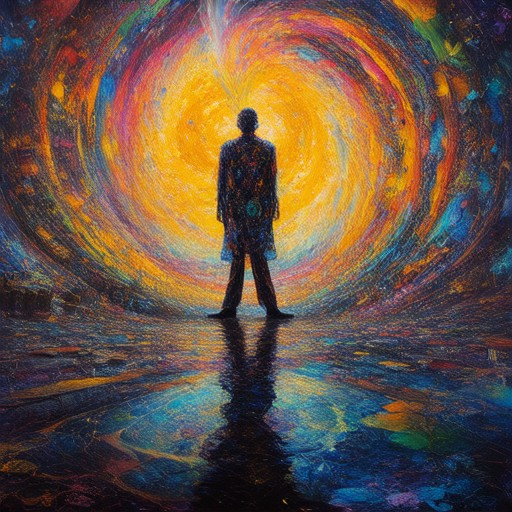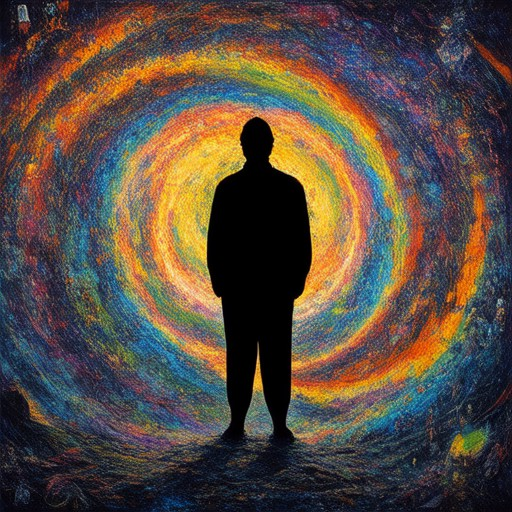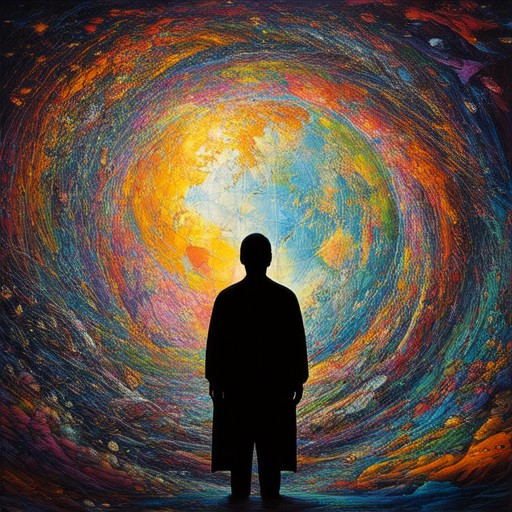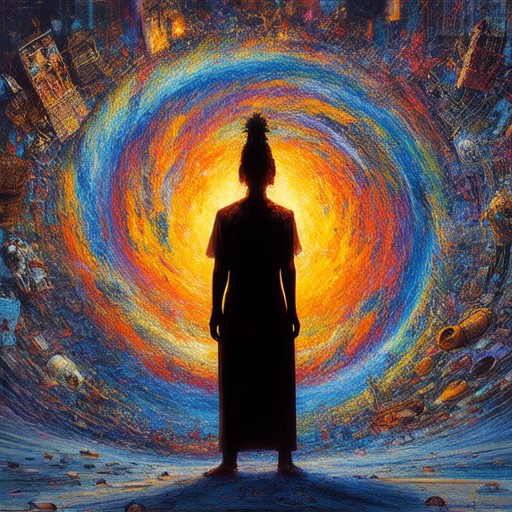The art world is a vast and diverse landscape, offering endless possibilities for exploration and discovery. For those eager to delve into its depths, a structured global thematic approach provides a unique lens through which to view this multifaceted domain. Whether you’re an avid art enthusiast or a curious newcomer, navigating the art world requires a thoughtful strategy that considers both historical contexts and contemporary developments. This guide will walk you through the process of exploring art on a global scale, examining how cross-cultural influences shape artistic movements and how collections from around the world reflect human creativity. By understanding the interconnected nature of art, you’ll gain insights into how different regions contribute to the broader cultural tapestry, ultimately enriching your appreciation for this dynamic field.

Exploring the Art World with a Structured Global Thematic Approach
To effectively explore the art world with a structured global thematic approach, begin by defining your interests and goals. Whether you’re interested in contemporary art, classical masterpieces, or emerging voices, having a clear focus will guide your journey.
Step 1: Choose a Theme or Movement
Select a specific theme or art movement that resonates with you. Examples include:
- Renaissance Art
- Modern Art Movements (e.g., Impressionism, Cubism)
- Contemporary Art
- Cultural Movements (e.g., African Art, Asian Calligraphy)
Research the key artists, styles, and historical contexts associated with your chosen theme. This will provide a roadmap for your exploration.
Step 2: Utilize Online Resources and Platforms
Leverage digital tools and platforms to discover global art. Websites like Articulate and Ted-Ed offer educational videos on art history and movements. Virtual galleries such as Virtual Galleries allow you to explore collections from around the world.
Step 3: Engage with Artist Communities
Connect with artist communities through platforms like DeviantArt or Behance . These communities provide insights into current trends, techniques, and artistic perspectives from diverse creators.
Step 4: Explore Regional Art Scenes
Don’t limit yourself to Western art. Explore vibrant art scenes in countries like Japan, India, or Brazil. Websites like Sakura Kyoto showcase Japanese traditional art, while Indian Art Collective highlights contemporary Indian art.
Step 5: Combine Mediums and Styles
Mix different art forms to enrich your understanding. For example, study how a painting inspires a sculpture or how a poem influences a digital artwork. This interdisciplinary approach deepens your appreciation for art’s versatility.
Step 6: Stay Curious and Open-Minded
Approach your exploration with curiosity and an open mind. Attend art fairs, exhibitions, and performances. Engage with critics and historians to gain deeper insights into the cultural significance of art.
Step 7: Document and Share Your Finds
Use social media platforms like Instagram and Pinterest to document your discoveries. Sharing your findings not only helps you reflect on your journey but also connects you with others who share your passion for art.
Step 8: Reflect and Iterate
Regularly reflect on your exploration. Adjust your approach based on what you’ve learned and what piques your interest next. The art world is constantly evolving, so staying adaptable ensures your journey remains fulfilling and meaningful.
By following this structured approach, you’ll not only deepen your understanding of the art world but also develop a personalized pathway that aligns with your unique interests and goals.
Exploring the Art World with a Structured Global Thematic Approach
To effectively explore the art world with a structured global thematic approach, begin by defining your interests and goals. Whether you’re interested in contemporary art, classical masterpieces, or emerging voices, having a clear focus will guide your journey.
Step 1: Choose a Theme or Movement
Select a specific theme or art movement that resonates with you. Examples include:
- Renaissance Art
- Modern Art Movements (e.g., Impressionism, Cubism)
- Contemporary Art
- Cultural Movements (e.g., African Art, Asian Calligraphy)
Research the key artists, styles, and historical contexts associated with your chosen theme. This will provide a roadmap for your exploration.
Step 2: Utilize Online Resources and Platforms
Leverage digital tools and platforms to discover global art. Websites like Articulate and Ted-Ed offer educational videos on art history and movements. Virtual galleries such as Virtual Galleries allow you to explore collections from around the world.
Step 3: Engage with Artist Communities
Connect with artist communities through platforms like DeviantArt or Behance . These communities provide insights into current trends, techniques, and artistic perspectives from diverse creators.
Step 4: Explore Regional Art Scenes
Don’t limit yourself to Western art. Explore vibrant art scenes in countries like Japan, India, or Brazil. Websites like Sakura Kyoto showcase Japanese traditional art, while Indian Art Collective highlights contemporary Indian art.
Step 5: Combine Mediums and Styles
Mix different art forms to enrich your understanding. For example, study how a painting inspires a sculpture or how a poem influences a digital artwork. This interdisciplinary approach deepens your appreciation for art’s versatility.
Step 6: Stay Curious and Open-Minded
Approach your exploration with curiosity and an open mind. Attend art fairs, exhibitions, and performances. Engage with critics and historians to gain deeper insights into the cultural significance of art.
Step 7: Document and Share Your Finds
Use social media platforms like Instagram and Pinterest to document your discoveries. Sharing your findings not only helps you reflect on your journey but also connects you with others who share your passion for art.
Step 8: Reflect and Iterate
Regularly reflect on your exploration. Adjust your approach based on what you’ve learned and what piques your interest next. The art world is constantly evolving, so staying adaptable ensures your journey remains fulfilling and meaningful.
By following this structured approach, you’ll not only deepen your understanding of the art world but also develop a personalized pathway that aligns with your unique interests and goals.

Exploring the Art World with a Structured Global Thematic Approach
To effectively explore the art world with a structured global thematic approach, begin by defining your interests and goals. Whether you’re interested in contemporary art, classical masterpieces, or emerging voices, having a clear focus will guide your journey.
Step 1: Choose a Theme or Movement
Select a specific theme or art movement that resonates with you. Examples include:
- Renaissance Art
- Modern Art Movements (e.g., Impressionism, Cubism)
- Contemporary Art
- Cultural Movements (e.g., African Art, Asian Calligraphy)
Research the key artists, styles, and historical contexts associated with your chosen theme. This will provide a roadmap for your exploration.
Step 2: Utilize Online Resources and Platforms
Leverage digital tools and platforms to discover global art. Websites like Articulate and Ted-Ed offer educational videos on art history and movements. Virtual galleries such as Virtual Galleries allow you to explore collections from around the world.
Step 3: Engage with Artist Communities
Connect with artist communities through platforms like DeviantArt or Behance . These communities provide insights into current trends, techniques, and artistic perspectives from diverse creators.
Step 4: Explore Regional Art Scenes
Don’t limit yourself to Western art. Explore vibrant art scenes in countries like Japan, India, or Brazil. Websites like Sakura Kyoto showcase Japanese traditional art, while Indian Art Collective highlights contemporary Indian art.
Step 5: Combine Mediums and Styles
Mix different art forms to enrich your understanding. For example, study how a painting inspires a sculpture or how a poem influences a digital artwork. This interdisciplinary approach deepens your appreciation for art’s versatility.
Step 6: Stay Curious and Open-Minded
Approach your exploration with curiosity and an open mind. Attend art fairs, exhibitions, and performances. Engage with critics and historians to gain deeper insights into the cultural significance of art.
Step 7: Document and Share Your Finds
Use social media platforms like Instagram and Pinterest to document your discoveries. Sharing your findings not only helps you reflect on your journey but also connects you with others who share your passion for art.
Step 8: Reflect and Iterate
Regularly reflect on your exploration. Adjust your approach based on what you’ve learned and what piques your interest next. The art world is constantly evolving, so staying adaptable ensures your journey remains fulfilling and meaningful.
By following this structured approach, you’ll not only deepen your understanding of the art world but also develop a personalized pathway that aligns with your unique interests and goals.

Exploring the Art World with a Structured Global Thematic Approach
To effectively explore the art world with a structured global thematic approach, begin by defining your interests and goals. Whether you’re interested in contemporary art, classical masterpieces, or emerging voices, having a clear focus will guide your journey.
Step 1: Choose a Theme or Movement
Select a specific theme or art movement that resonates with you. Examples include:
- Renaissance Art
- Modern Art Movements (e.g., Impressionism, Cubism)
- Contemporary Art
- Cultural Movements (e.g., African Art, Asian Calligraphy)
Research the key artists, styles, and historical contexts associated with your chosen theme. This will provide a roadmap for your exploration.
Step 2: Utilize Online Resources and Platforms
Leverage digital tools and platforms to discover global art. Websites like Articulate and Ted-Ed offer educational videos on art history and movements. Virtual galleries such as Virtual Galleries allow you to explore collections from around the world.
Step 3: Engage with Artist Communities
Connect with artist communities through platforms like DeviantArt or Behance . These communities provide insights into current trends, techniques, and artistic perspectives from diverse creators.
Step 4: Explore Regional Art Scenes
Don’t limit yourself to Western art. Explore vibrant art scenes in countries like Japan, India, or Brazil. Websites like Sakura Kyoto showcase Japanese traditional art, while Indian Art Collective highlights contemporary Indian art.
Step 5: Combine Mediums and Styles
Mix different art forms to enrich your understanding. For example, study how a painting inspires a sculpture or how a poem influences a digital artwork. This interdisciplinary approach deepens your appreciation for art’s versatility.
Step 6: Stay Curious and Open-Minded
Approach your exploration with curiosity and an open mind. Attend art fairs, exhibitions, and performances. Engage with critics and historians to gain deeper insights into the cultural significance of art.
Step 7: Document and Share Your Finds
Use social media platforms like Instagram and Pinterest to document your discoveries. Sharing your findings not only helps you reflect on your journey but also connects you with others who share your passion for art.
Step 8: Reflect and Iterate
Regularly reflect on your exploration. Adjust your approach based on what you’ve learned and what piques your interest next. The art world is constantly evolving, so staying adaptable ensures your journey remains fulfilling and meaningful.
By following this structured approach, you’ll not only deepen your understanding of the art world but also develop a personalized pathway that aligns with your unique interests and goals.
Exploring the Art World with a Global Thematic Approach
To effectively explore the art world with a structured global thematic approach, consider the following organized strategy:
1. Regional Exploration
- Europe : Begin with iconic museums like the Louvre in Paris and the British Museum in London, which house masterpieces from Renaissance to modern art.
- Asia : Discover traditional Japanese prints at the Tokyo National Museum and contemporary Chinese art at the Shanghai Museum of Fine Arts.
- North America : Visit the Museum of Modern Art (MoMA) in New York and the Solomon R. Guggenheim Museum in New York City.
- Latin America : Explore the vibrant street art of Brazil and the abstract expressions of Mexico.
- Africa : Delve into the rich cultural heritage at the African National Art Gallery in Johannesburg.
2. Art Movements and Styles
- Modernism : Study the works of Picasso, Matisse, and Mondrian, which defined the 20th-century art movement.
- Impressionism : Understand the light-and-shade techniques of Monet, Renoir, and Van Gogh.
- Contemporary Art : Engage with living artists and movements like Minimalism, Pop Art, and Abstract Expressionism.
- Street Art : Explore murals by Banksy and Jean-Michel Basquiat in urban settings worldwide.
3. Cultural Diversity
- Global Themes : Investigate how artists from diverse backgrounds reinterpret universal themes like love, war, and identity.
- Cultural Contexts : Learn about how different cultures interpret art through their unique histories and traditions.
4. Resources and Platforms
- Online Platforms : Use platforms like Artfinder and Saatchi Gallery to discover and collect art digitally.
- Galleries and Auctions : Visit local galleries and participate in auctions to experience rare and valuable pieces.
- Art Fairs : Attend events like Art Basel Miami to connect with international artists and collectors.
5. Museums and Exhibitions
- Major Institutions : Schedule visits to renowned museums and attend special exhibitions focused on specific themes.
- Educational Programs : Enroll in workshops or courses offered by art institutions to deepen your understanding.
6. Artist Engagement
- Artist Websites : Follow artists’ websites and social media channels to stay updated on their latest works and projects.
- Collectives : Join artist collectives and groups to network with creators and gain insider access to the art scene.
7. Personal Exploration
- Travel and Research : Plan trips to art hotspots and conduct thorough research on artists and movements of interest.
- Local Galleries : Visit local galleries and art walks to discover emerging talent and niche genres.
By systematically exploring these areas, you can create a well-rounded and enriching journey through the global art world.

Exploring the Art World with a Global Thematic Approach
To effectively explore the art world through a structured global thematic approach, begin by focusing on key regions and their unique artistic traditions. Consider visiting major art hubs such as Europe, Asia, North America, Latin America, and Africa, each offering distinct cultural perspectives and artistic movements.
- Regional Exploration:
- Europe: Start with iconic museums like the Louvre in Paris and the British Museum in London. Explore works from the Renaissance to Modernism, including artists like da Vinci, Rembrandt, and Banksy.
- Asia: Discover traditional Japanese calligraphy, Chinese watercolor paintings, and Indian classical art. Visit institutions like the Tokyo National Museum and the Shanghai Museum of Fine Arts.
- North America: Experience American Abstract Expressionism and Mexican muralism. Check out collections at the Museum of Modern Art (MoMA) in New York and the Los Angeles County Museum of Art (LACMA).
- Latin America: Investigate contemporary art movements in Brazil, Argentina, and Mexico. Artists like Frida Kahlo and Diego Rivera highlight the region’s rich cultural heritage.
- Africa: Explore African contemporary art, blending traditional techniques with modern mediums. Visit the Zeitz MOCAA museum in Cape Town.
- Thematic Approaches:
- Historical Periods: Study art movements chronologically, from the Renaissance to the present day. Research artists associated with each period, such as Baroque painters or Impressionist photographers.
- Artistic Styles: Focus on specific styles like geometric abstraction, surrealism, or photorealism. Analyze works by artists who exemplify these styles.
- Media Types: Delve into different art forms, including painting, sculpture, photography, and installation art. Explore how each medium expresses unique ideas and emotions.
- Digital Resources:
- Utilize online platforms like Google Arts & Culture to explore virtual exhibitions and collections.
- Visit websites dedicated to art education, such as Art UK , which provides detailed information on UK-based artworks and artists.
- Engage with art communities through social media platforms and forums, such as Reddit’s r/Art or Instagram’s art-related hashtags.
- Serendipitous Discoveries:
- Attend art fairs and biennales to discover emerging artists and niche genres.
- Visit local galleries and exhibitions to experience diverse perspectives and styles.
- Participate in art workshops or classes to develop your own artistic skills and gain deeper appreciation for different techniques.
By combining regional exploration with thematic focus, leveraging digital tools, and embracing serendipitous encounters, you can create a well-rounded and enriching journey through the global art world. Remember to stay curious, open-minded, and engaged in the process of discovery.




0 Comments